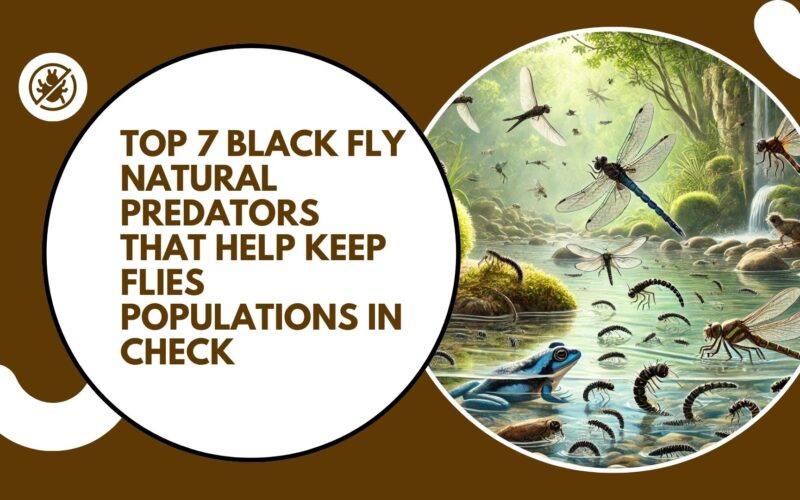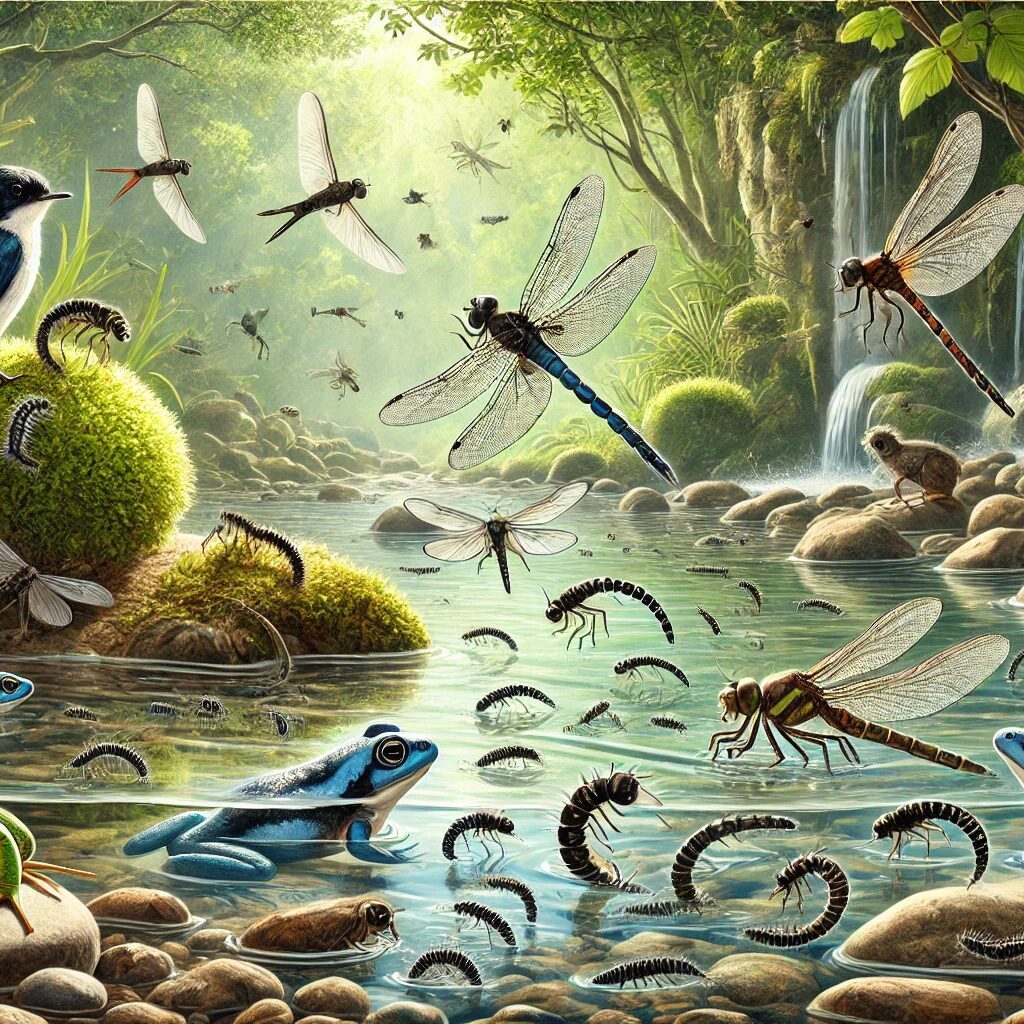
Up to 80% of black fly larvae are controlled by black fly natural predators like fish and aquatic insects, keeping adult populations down before they can start biting.
Black flies are small, biting insects belonging to the family Simuliidae and are commonly associated with areas near freshwater.
These flies thrive in rivers and streams, particularly where water flows quickly, which serves as an ideal habitat for their larvae.
Although black flies are ecologically important, their presence can be a significant nuisance to humans and animals. In some cases, they are even vectors for diseases like river blindness (Onchocerciasis) in tropical regions.
Here’s a detailed overview of the key black fly genera and species, along with their black fly natural predators, which help keep their populations in check.
1. Black Fly Natural Predators for Simulium (Includes S. damnosum, S. venustum, S. arcticum, S. tuberosum, S. ochraceum, S. colombaschense, S. erythrocephalum)
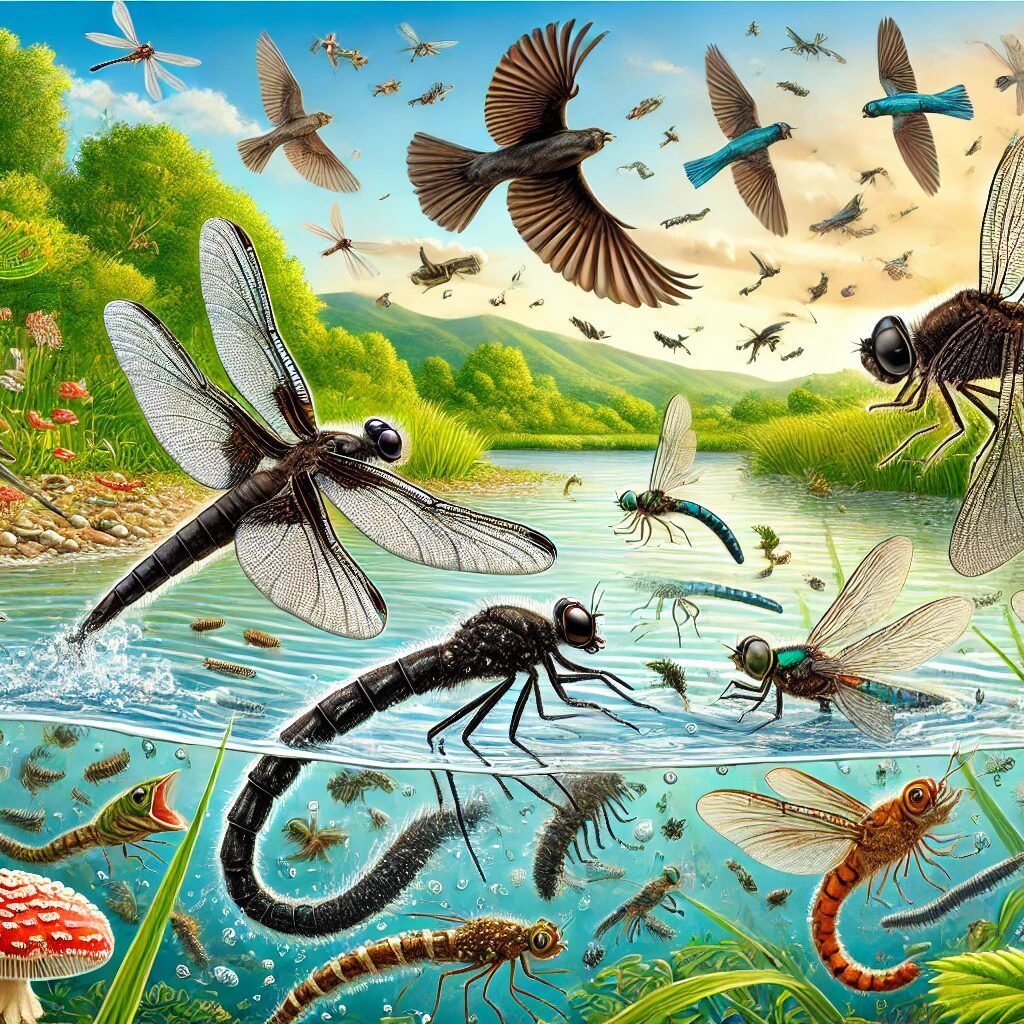
The populations of Simulium species are naturally regulated by a range of Black Fly Natural Predators. Fish such as trout, bass, and perch are highly effective in consuming Simulium larvae, especially in streams and rivers where these flies breed.
Swallows, swifts, and purple martins are adept at catching adult flies mid-flight, particularly during peak swarming seasons.
Aquatic insects like dragonfly nymphs and diving beetles also play a crucial role by preying on larvae in freshwater, helping to reduce future adult populations. Additionally, bats help control adult black fly numbers, feeding on them during their evening hunts, further lowering the biting nuisances caused by these species.
Simulium species are found worldwide, with particular abundance in tropical, subtropical, and temperate regions.
They prefers fast-flowing rivers and streams, with species adapted to a wide range of climates, from tropical rivers to cold streams in northern regions.
The genus Simulium is among the most globally diverse and widespread, including species that cause irritation and transmit diseases. Simulium damnosum, for example, is a notorious vector for river blindness in Africa, while Simulium ochraceum is known to spread this disease in Central America.
In North America, Simulium venustum is a common biting nuisance, causing painful itching. Meanwhile, species like Simulium arcticum are adapted to survive in northern climates, with adults emerging from cold, fast-moving waters.
The swarming behavior of species like Simulium colombaschense in Europe and Simulium erythrocephalum in Asia often results in severe discomfort and irritation for humans.
2. Black Fly Natural Predators for Prosimulium (Includes P. hirtipes)
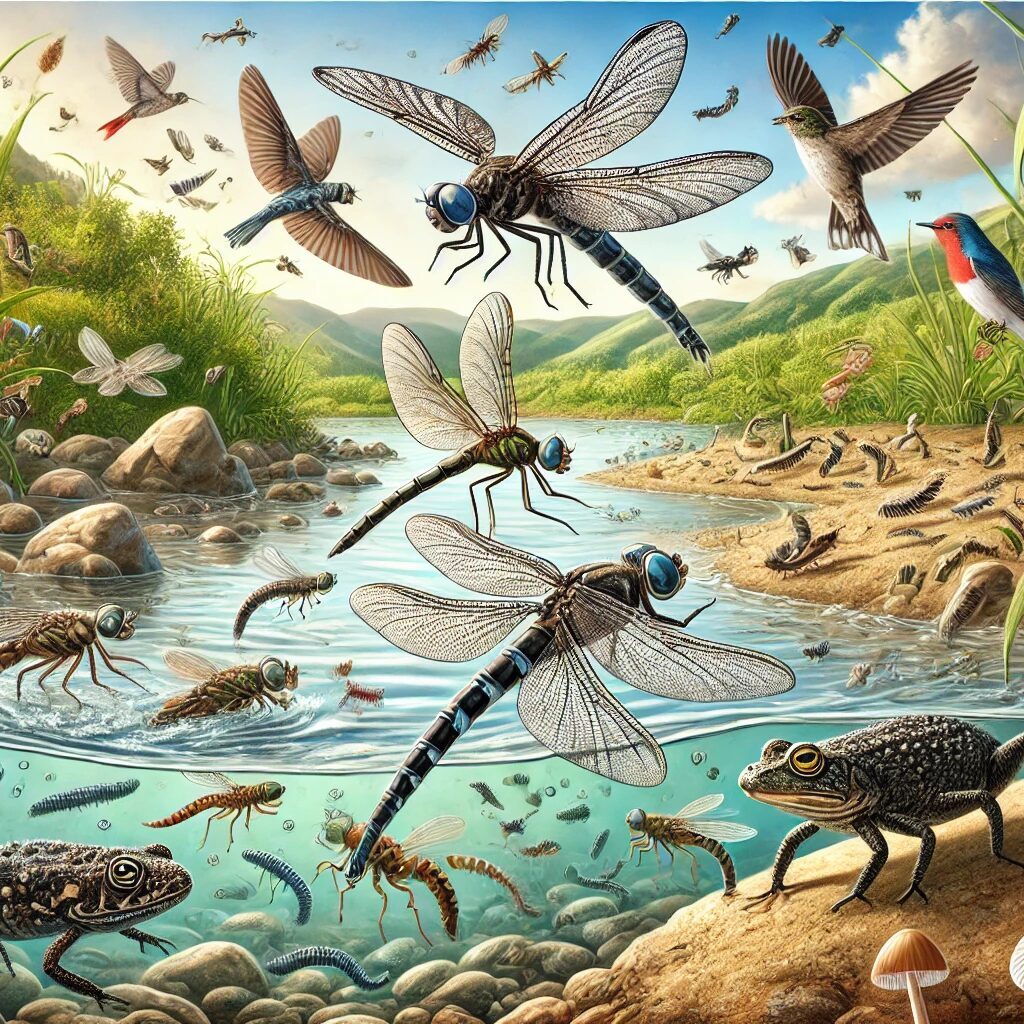
Predators of Prosimulium flies include stonefly larvae and dragonfly nymphs, which share the same cold-water habitats. These aquatic predators target black fly larvae directly, consuming them before they can mature into biting adults.
Fish species like trout are also important black fly natural predators, naturally regulating Prosimulium populations by feeding on their larvae in mountain streams. These predators help maintain a balanced ecosystem and limit the nuisance caused by adult black flies by reducing the number of larvae.
Prosimulium species are native to North America and Eurasia, especially in colder regions.
They are found in cold mountain streams, often found in high-elevation areas with fast-flowing water.
Prosimulium species emerge early in spring and prefer colder water environments. They tend to be less aggressive than other black flies but can become a nuisance in areas with high numbers.
Prosimulium hirtipes, common in North America, is often found in cold-water streams where it coexists with other aquatic insects and fish. While not as aggressive as some species in the Simulium genus, they are still capable of delivering bites to humans and animals if encountered in large numbers.
3. Black Fly Natural Predators for Austrosimulium (Includes A. australense)
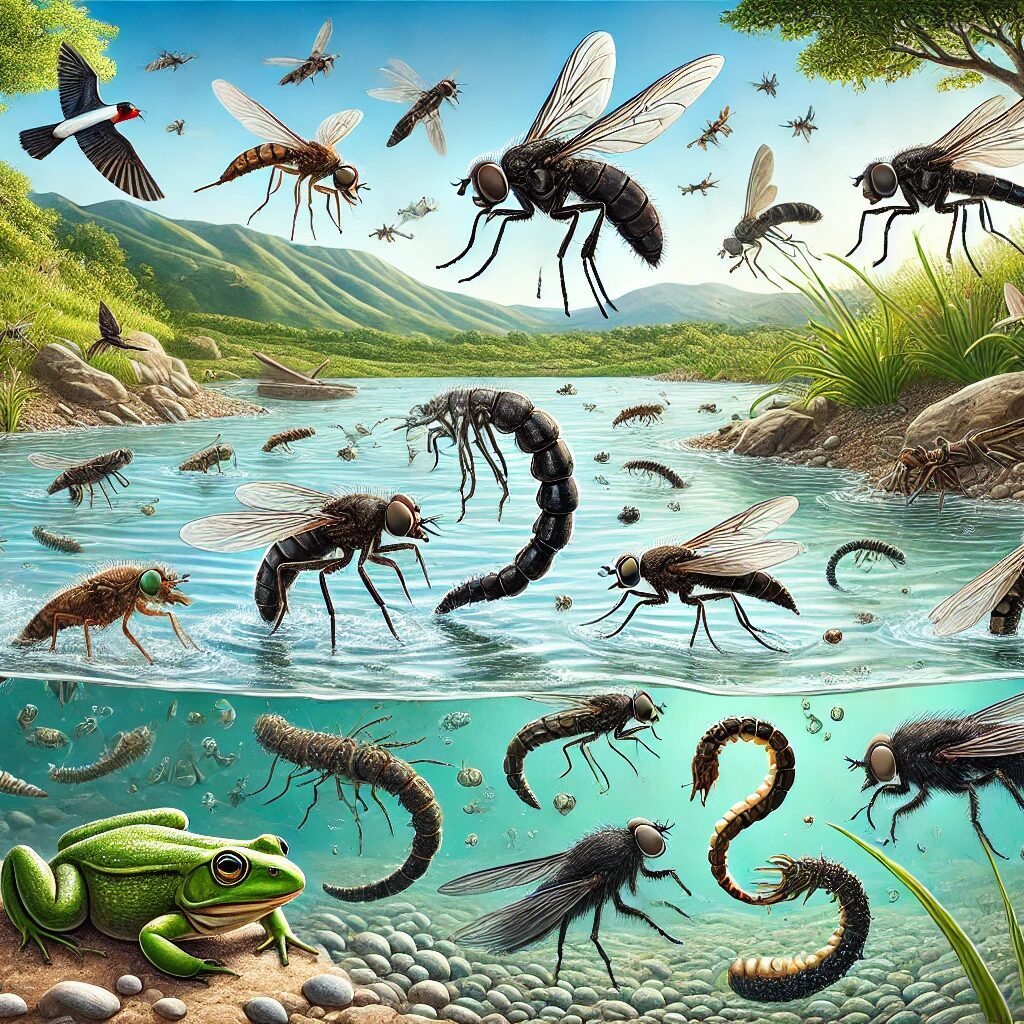
Fish native to Australia and New Zealand, including trout, are key black fly natural predators of Austrosimulium larvae. In addition to fish, insectivorous birds like swallows and kingfishers contribute to controlling adult populations by preying on flies around water bodies.
These natural predators help keep Austrosimulium numbers in balance, reducing the biting nuisance in areas where these flies are common.
Austrosimulium is primarily found in Australia and New Zealand in clean, flowing waters in forested and open areas.
Recognizable by a metallic sheen and unique wing patterns, Austrosimulium species, such as A. australense, are known for their painful bites. These flies are highly active in warmer months, particularly near forested streams and clean rivers in Australia and New Zealand. Their biting behavior can be a significant nuisance, especially in rural and recreational areas.
4. Black Fly Natural Predators for Gigantodax
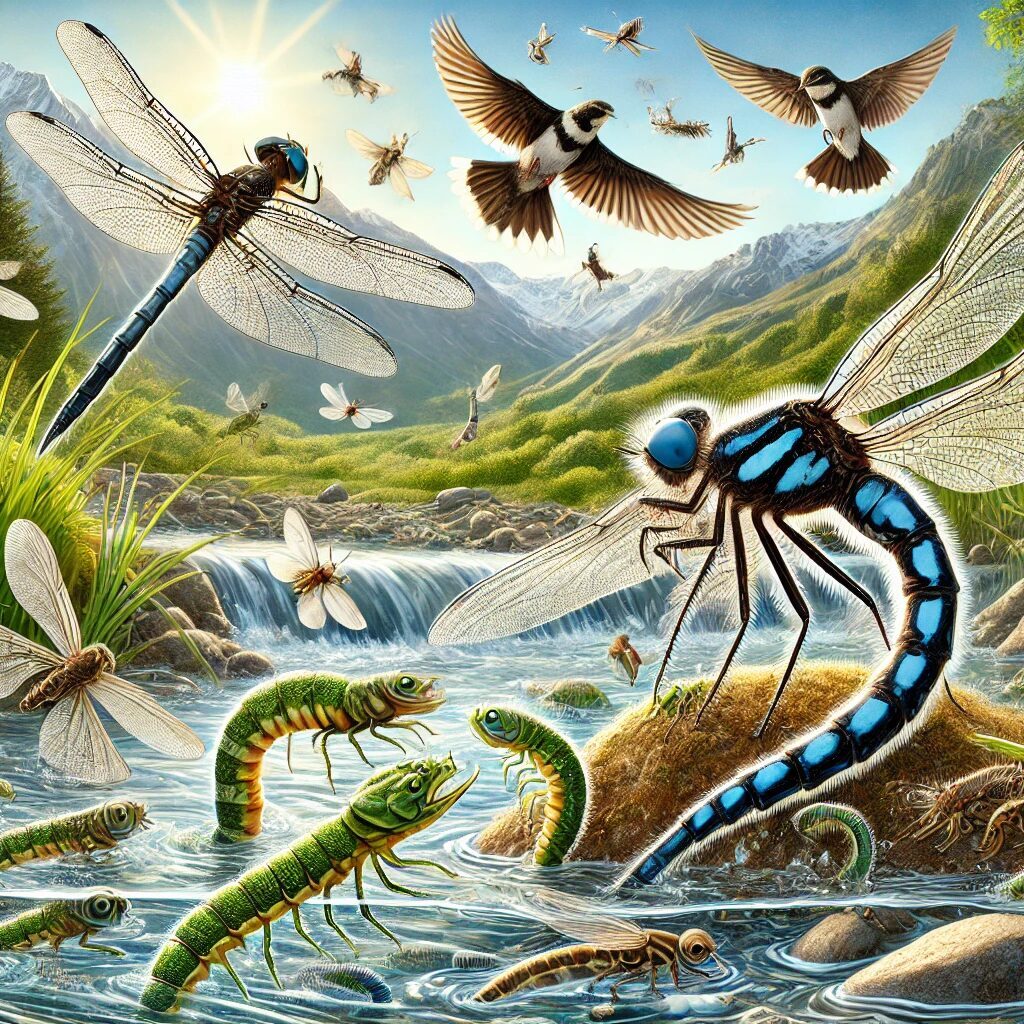
In tropical regions, fish and aquatic insects play a significant role as black fly natural predators of Gigantodax larvae. Predatory insects, including dragonfly nymphs and diving beetles, target the larvae in fast-flowing waters, while birds such as swallows and swifts help to reduce adult populations.
These predators collectively help to balance Gigantodax populations, mitigating the biting impact of this black fly genus in Central and South American highlands.
Gigantodax is found in Central and South America, primarily in tropical highlands, in a mountainous stream in humid, tropical environments.
Gigantodax species are larger than many other black flies, with distinct wing patterns and powerful bites. They thrive in the highland streams of Central and South America, where they are often found in dense populations that can cause severe discomfort to humans and animals.
5. Black Fly Natural Predators for Cnephia (Includes C. pecuarum)
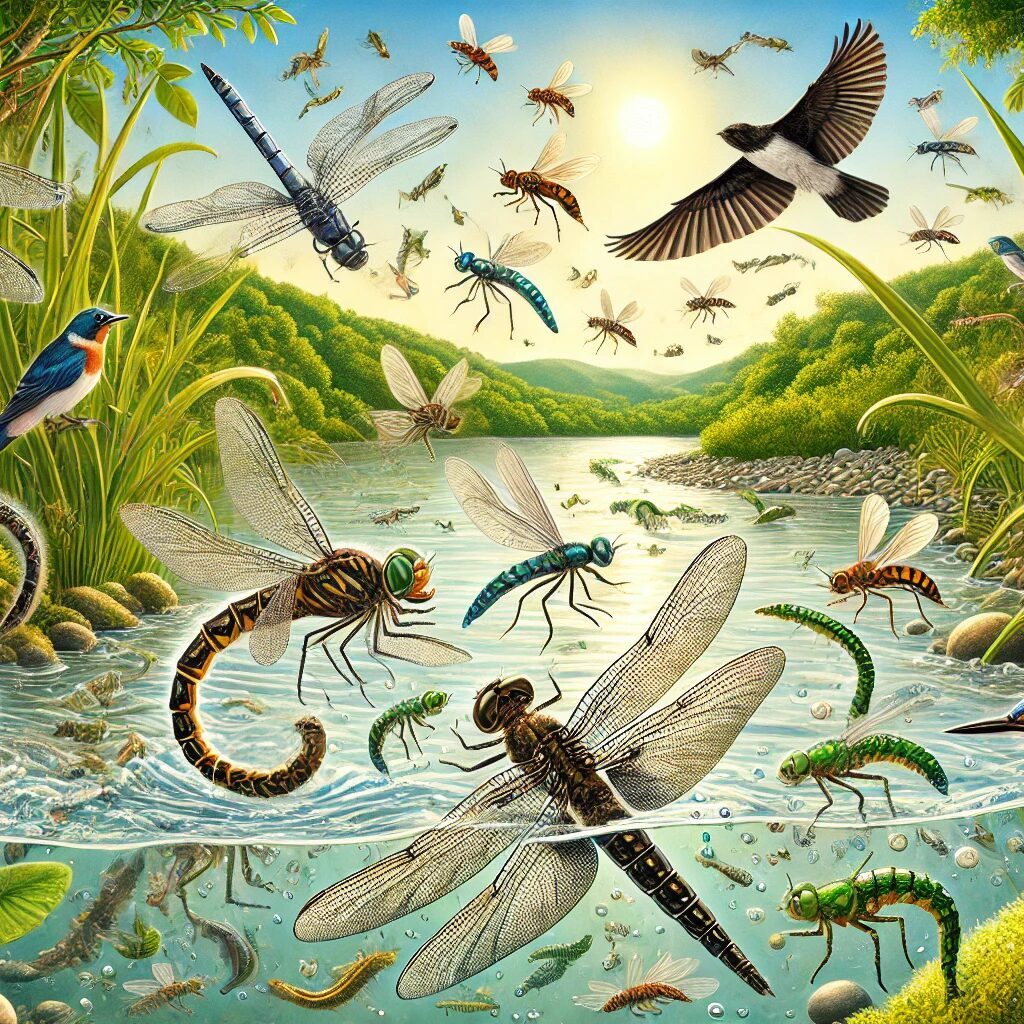
Predators of Cnephia include fish, particularly bass, which consume the larvae in calm streams. Birds such as swallows and purple martins are effective at catching adult flies, especially in areas near livestock.
Additionally, diving beetles play a role as black fly natural predators by preying on Cnephia larvae, helping to control populations and lessen the impact on livestock and nearby human populations.
Cnephia is found in the Southeastern United States in calm, shaded streams, frequently near livestock areas.
Known as “buffalo gnats” due to their humped appearance, Cnephia species, especially C. pecuarum, are aggressive biters and pose a notable nuisance to livestock and humans. They thrive in sheltered water environments where larvae can develop away from direct sunlight.
6. Black Fly Natural Predators for Parasimulium
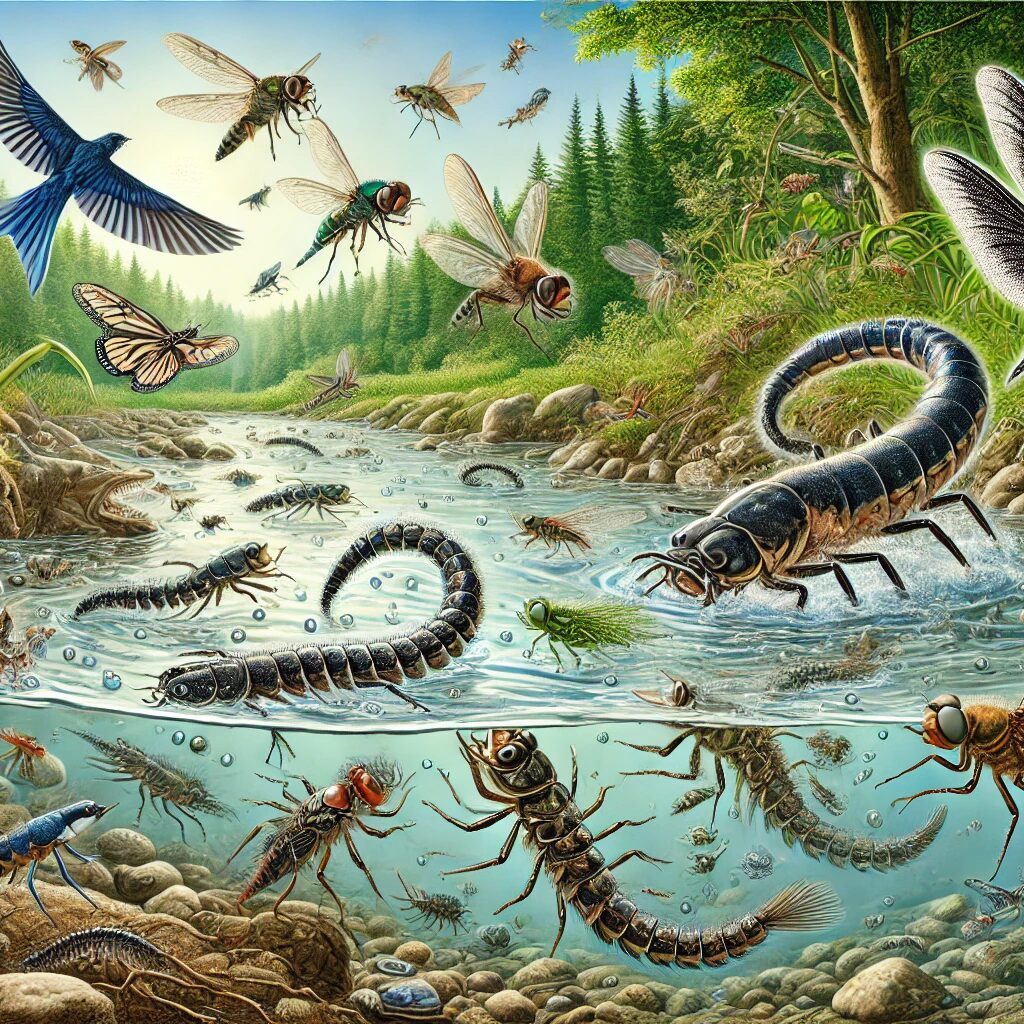
In high-altitude streams, predatory aquatic insects such as stonefly larvae and diving beetles prey on Parasimulium larvae. Fish, like trout, also serve as significant black fly natural predators, helping to reduce the number of larvae that reach adulthood and lowering the presence of these flies in mountainous regions.
Parasimulium species are Western North America, particularly in mountainous areas, old, high-altitude mountain streams.
Smaller and less conspicuous, Parasimulium species are well adapted to cold, high-elevation streams, where they are more likely to affect local wildlife than humans. They tend to have shorter lifespans and are less aggressive, yet they still can become a nuisance if populations grow unchecked.
7. Black Fly Natural Predators for Gymnopais species
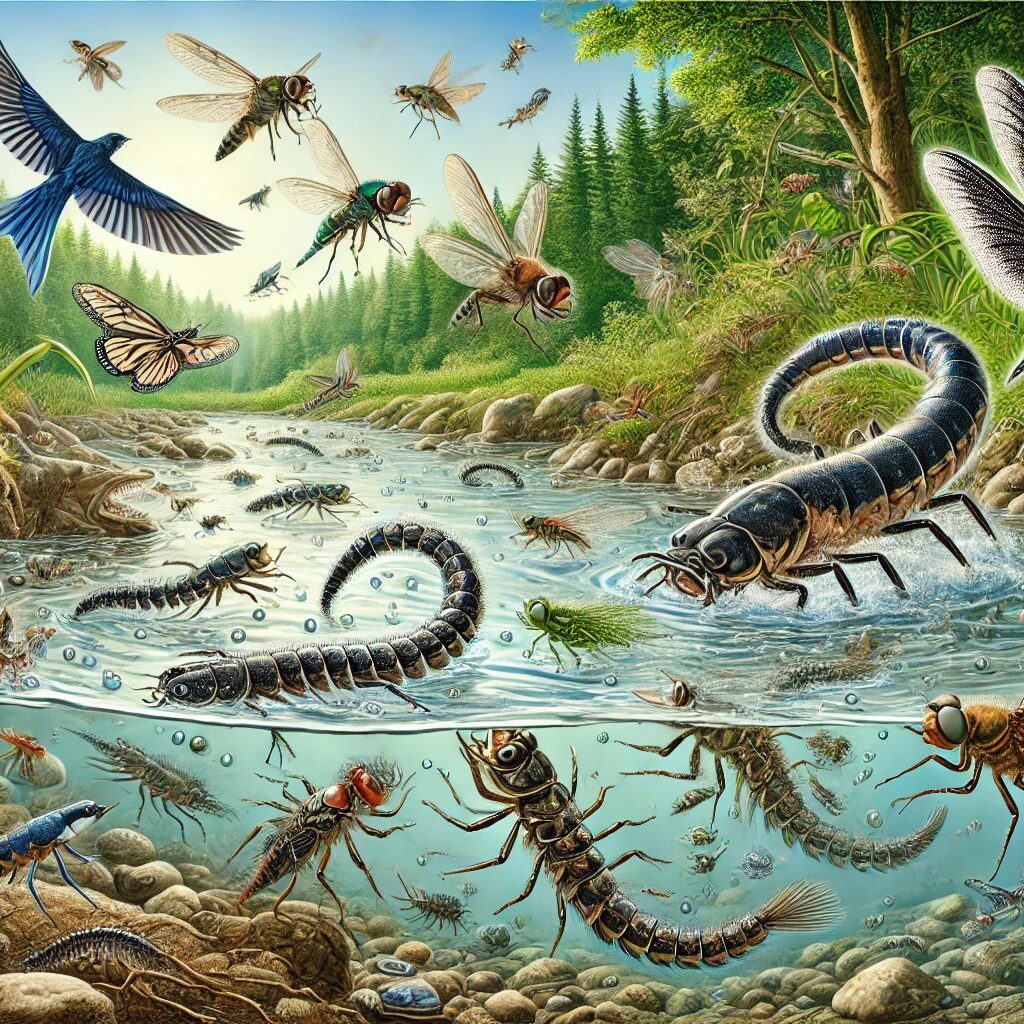
Fish such as Arctic grayling and trout are effective black fly natural predators of Gymnopais larvae, consuming them in the early stages and limiting the number of adults that emerge in colder seasons.
Dragonfly nymphs also play a role in controlling Gymnopais populations, feeding on larvae in the same freshwater habitats.
Gymnopais species are found Northern North America, especially in Canada and Alaska, in the cold rivers and streams.
Gymnopais species are exceptionally resilient, thriving in cold waters where they attach themselves to submerged rocks in fast-flowing streams. They are a vital part of the cold-water ecosystem in northern regions, although they can still be a biting nuisance to humans and animals when populations grow.
Conclusion
Black fly natural predators play a crucial role in managing black fly populations sustainably within ecosystems. By preying on larvae and adults at different life stages, predators like fish, birds, and aquatic insects reduce the nuisance and health risks of large black fly populations.
Integrating these natural predators into pest management practices minimizes chemical use, supports biodiversity, and promotes ecosystem balance.
This nature-based approach aligns with sustainable pest control, offering long-term benefits for human health and environmental resilience. Protecting and enhancing habitats for these predators can improve control efforts, fostering a healthier, balanced ecosystem.
